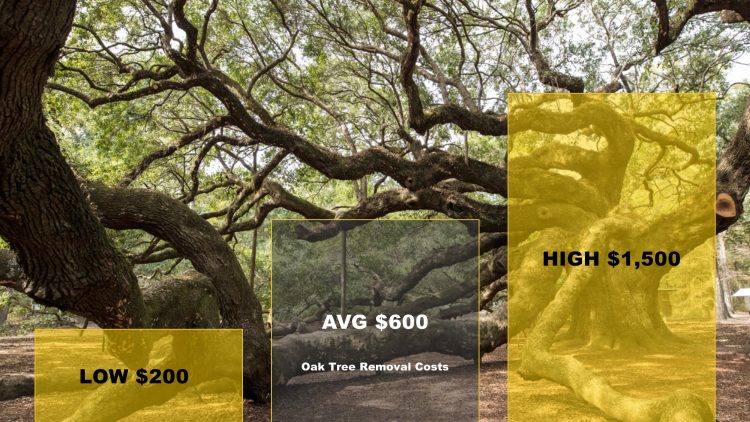Featured
Table of Contents
- – Expected Costs For A Arborist In East Bakersfi...
- – Choosing The Right Tree Service In East Bakers...
- – East Bakersfield, CA Stump Removal: Package D...
- – Honest Tree Trimming Pricing In East Bakersfi...
- – Trusted Tree Clearing In East Bakersfield, CA...
- – East Bakersfield, CA Tree Trimming Price Vari...
- – East Bakersfield, CA Stump Removal No Hidden ...
- – Typical Tree Trimming Costs In East Bakersfi...
- – Top-Rated Tree Service In East Bakersfield, ...
- – How To Budget For An Stump Grinding In East ...
- – East Bakersfield, CA Stump Removal: True Pri...
- – East Bakersfield, CA Tree Service Upgrade Pr...
- – Top-Rated Tree Clearing In East Bakersfield,...
- – Top Tree Cutting Reviews In East Bakersfield...
- – What You Need To Know About Tree Service Cos...

The subsections listed below supply more in-depth details about pricing, consisting of a typical variety for each. TypeAverage Removal CostPineConiferPalmMagnoliaArborvitaeAshCedarSweet GumEucalyptusSycamoreCypressOakMaplePoplar You can anticipate to pay between to get rid of a pine, depending upon its size. Getting rid of a pine is among the more affordable jobs unless it is one that has actually been around for many years and is quite big.
Expected Costs For A Arborist In East Bakersfield, CA
Pines likewise have a tap root that grows deep into the soil, which can prove to be harder to eliminate. The process itself involves an expert cutting the tree, clearing the base, cutting the surface roots, removing the stump, and finally treating the soil. Without a professional hand, you run the risk of leaving pine seedlings behind, which will fall from the roots of distressed pines.
Choosing The Right Tree Service In East Bakersfield, CA: Price vs Quality
The U.S. nationwide average for conifer elimination is roughly to have the conifer cut down, hauled away, and the stump ground or removed entirely. Conifers are normally simpler to remove, and even though they can grow rather high, they do not cost a fortune to eliminate. Conifers include pine, spruce, fir, and juniper trees.
East Bakersfield, CA Stump Removal: Package Deals
While conifers are lovely, they kill native plants and specific types of yard (stump grinding). The average cost of palm elimination depends on the height as much as the type, varying from.
Honest Tree Trimming Pricing In East Bakersfield, CA
That is why it is necessary to know which type you are removing. While you do not require an herbicide to eliminate a palm tree, there are some actions your elimination expert will need to take to ensure the task is done correctly. There are two ways they can get rid of them: by slicing them down or digging them up.
Trusted Tree Clearing In East Bakersfield, CA: Reviews
From there, they get rid of the actual tree and then the stump. Expect to pay in between to remove this type of tree, depending on the exact size and information of the task.
East Bakersfield, CA Tree Trimming Price Variables
There are 3 types: green, white, and black ash. With its gray-tinged bark, its leaves are green or purple in the spring and golden yellow or purplish-red in the fall.
East Bakersfield, CA Stump Removal No Hidden Fees

Due to the variation in height, the removal cost variation is wide from. A coniferous, evergreen tree, the cedar is a hardy species.
Typical Tree Trimming Costs In East Bakersfield, CA
The growth of incorrect cedars differs from 50 feet approximately 230 feet high. House owners might pay anywhere from, depending on the roots. With star-shaped leaves and sensational fall colors, the sweet gum is considered a medium to large tree. Enjoying full sun, the sweet gum can not tolerate contamination.
Top-Rated Tree Service In East Bakersfield, CA: Pricing
Typically, it costs in between to get rid of a eucalyptus. Eucalyptus are not common everywhere, however they are rather big compared to others, which is why even the smaller ones are so expensive to get rid of.
How To Budget For An Stump Grinding In East Bakersfield, CA
There are a handful of methods to do this, consisting of burning, pulling, grinding, or eliminating them with herbicide. Expect to pay in between to remove sycamores, based on the height, trunk size, and quantity of work involved. Sycamores are one of the largest wood trees, normally ranging from 60 to 100 feet tall and as large as 15 feet.
East Bakersfield, CA Stump Removal: True Pricing
The first two actions will expose the withins of the tree and cut off the flow of nutrients up the trunk. From there, an expert applies herbicide to eliminate the tree and cuts down the trunk. They will eliminate the stump. Otherwise, brand-new sprouts might grow from it. Reducing and eliminating a full-grown cypress could cost as much as.
East Bakersfield, CA Tree Service Upgrade Programs: Costs
There are several types of Cypress trees, but the most prevalent are the Leyland, Arizona, Bald, and Italian. The Bald Cypress grows in swampy or extremely moist locations while the others delight in a dry, warm, or hot environment (tree clearing). They can grow as high as 80 to 100 feet high
Top-Rated Tree Clearing In East Bakersfield, CA: Pricing

Prone to diseases, the Cypress is among the most valued woods for furniture. The typical oak grows to around 60 feet, and depending on the complexity of the elimination, it costs approximately to remove. The exact size of your oak and the effort required to fell it affect what you will actually spend for elimination in addition to any extra services like stump grinding.
Top Tree Cutting Reviews In East Bakersfield, CA
Access to the trees and the roots will also affect the general expense. Maples are generally among the more expensive trees to remove due to the fact that of their size and the work involved in the elimination.
What You Need To Know About Tree Service Costs In East Bakersfield, CA
Poplars are giants of the types. Growing as high as 90 to 115 feet, these enormous lumbers are generally discovered in The United States and Canada and consist of the aspen, cottonwood, and balsam trees. Boasting an extensive root system, poplars can be costly to eliminate when completely grown. The process to get rid of trees includes all the trimming and cutting of the branches and trunk, bringing it down to a stump.
Table of Contents
- – Expected Costs For A Arborist In East Bakersfi...
- – Choosing The Right Tree Service In East Bakers...
- – East Bakersfield, CA Stump Removal: Package D...
- – Honest Tree Trimming Pricing In East Bakersfi...
- – Trusted Tree Clearing In East Bakersfield, CA...
- – East Bakersfield, CA Tree Trimming Price Vari...
- – East Bakersfield, CA Stump Removal No Hidden ...
- – Typical Tree Trimming Costs In East Bakersfi...
- – Top-Rated Tree Service In East Bakersfield, ...
- – How To Budget For An Stump Grinding In East ...
- – East Bakersfield, CA Stump Removal: True Pri...
- – East Bakersfield, CA Tree Service Upgrade Pr...
- – Top-Rated Tree Clearing In East Bakersfield,...
- – Top Tree Cutting Reviews In East Bakersfield...
- – What You Need To Know About Tree Service Cos...
Latest Posts
Yauco, PR Tree Clearing Pricing Tiers
South Lake Tahoe, CA Tree Cutting Quote For Homeowners
Batesville, AR Stump Grinding Customer Reviews
More
Latest Posts
Yauco, PR Tree Clearing Pricing Tiers
South Lake Tahoe, CA Tree Cutting Quote For Homeowners
Batesville, AR Stump Grinding Customer Reviews